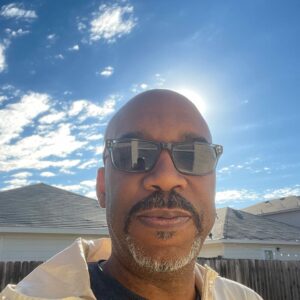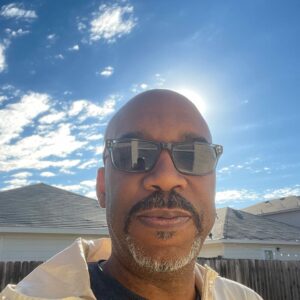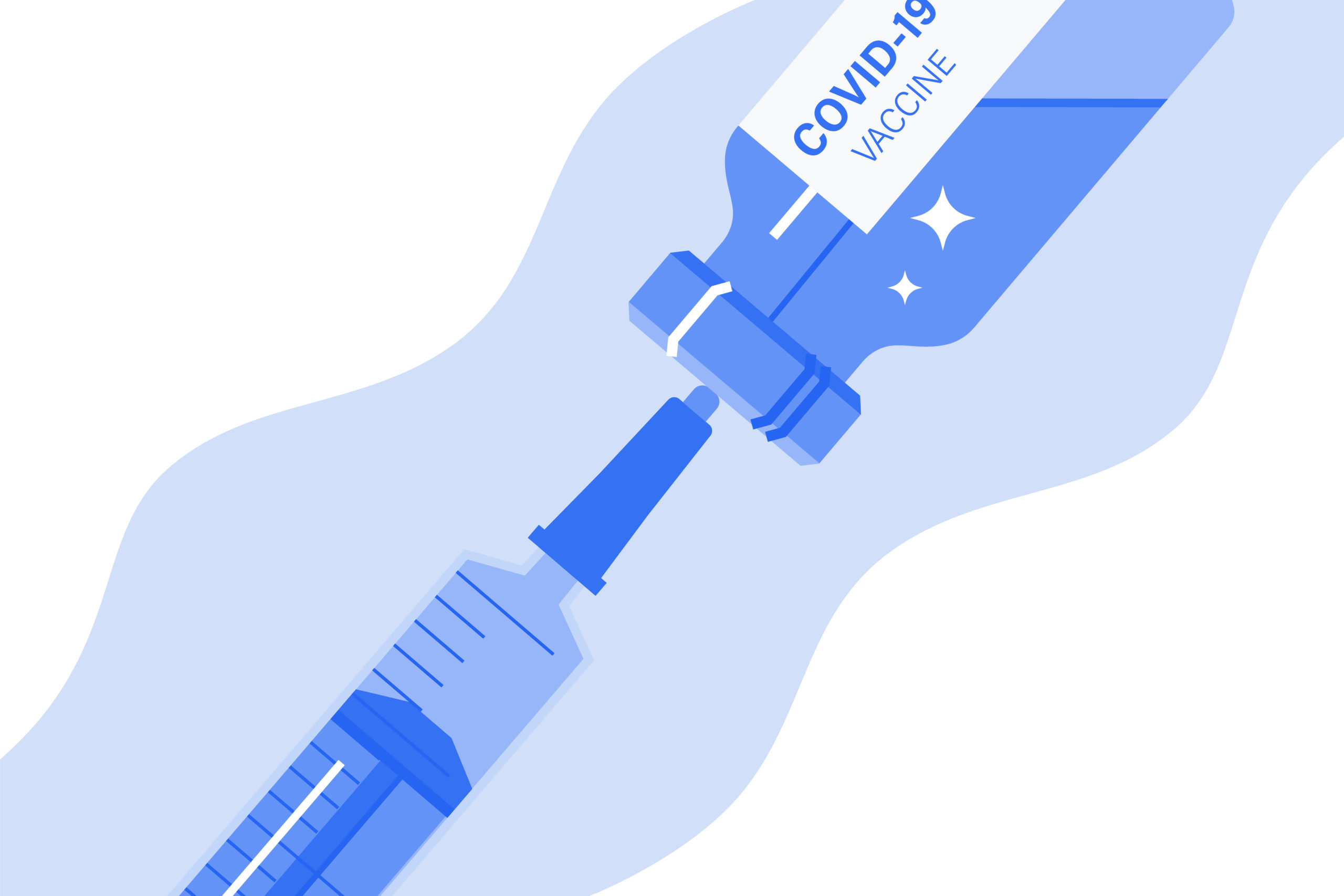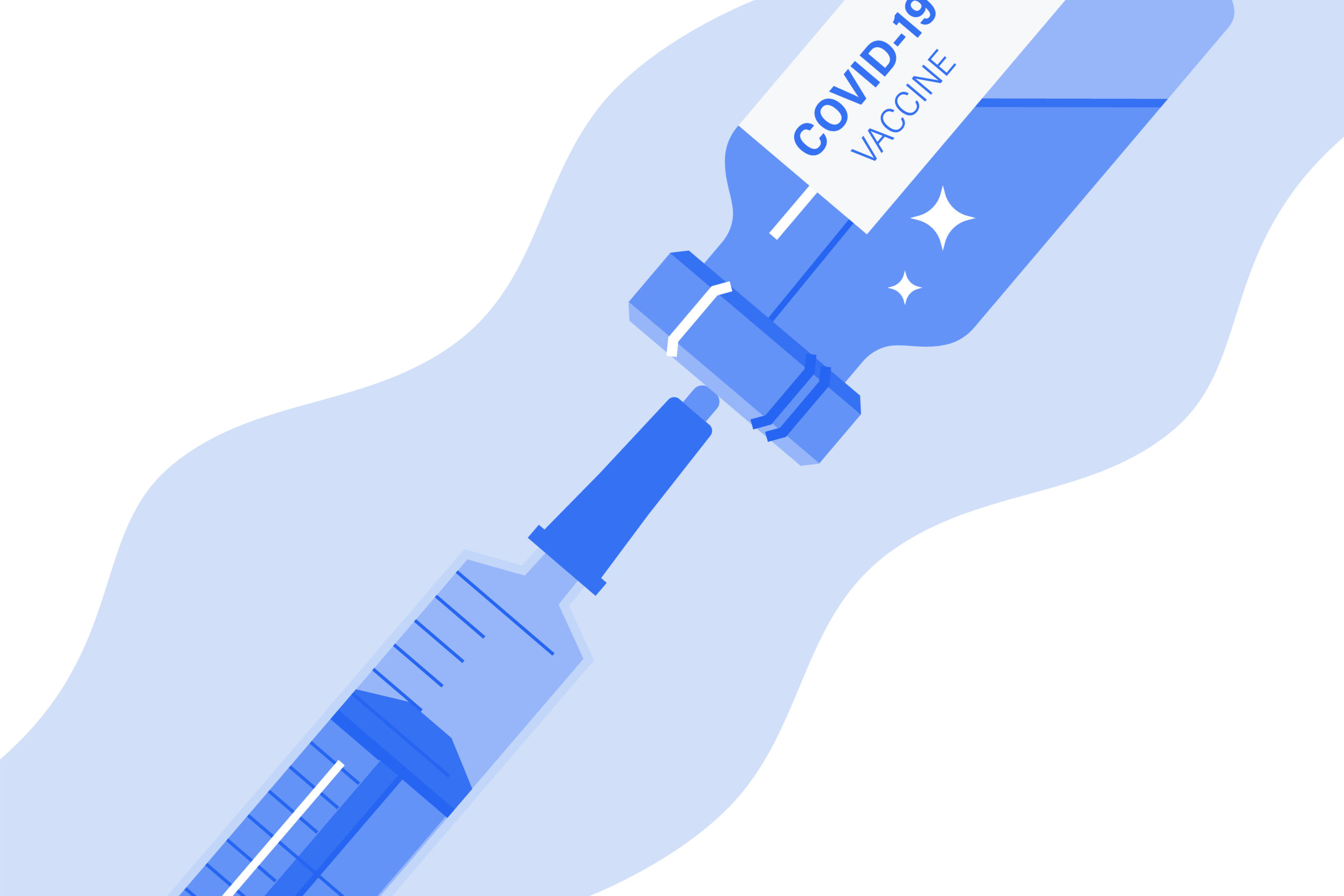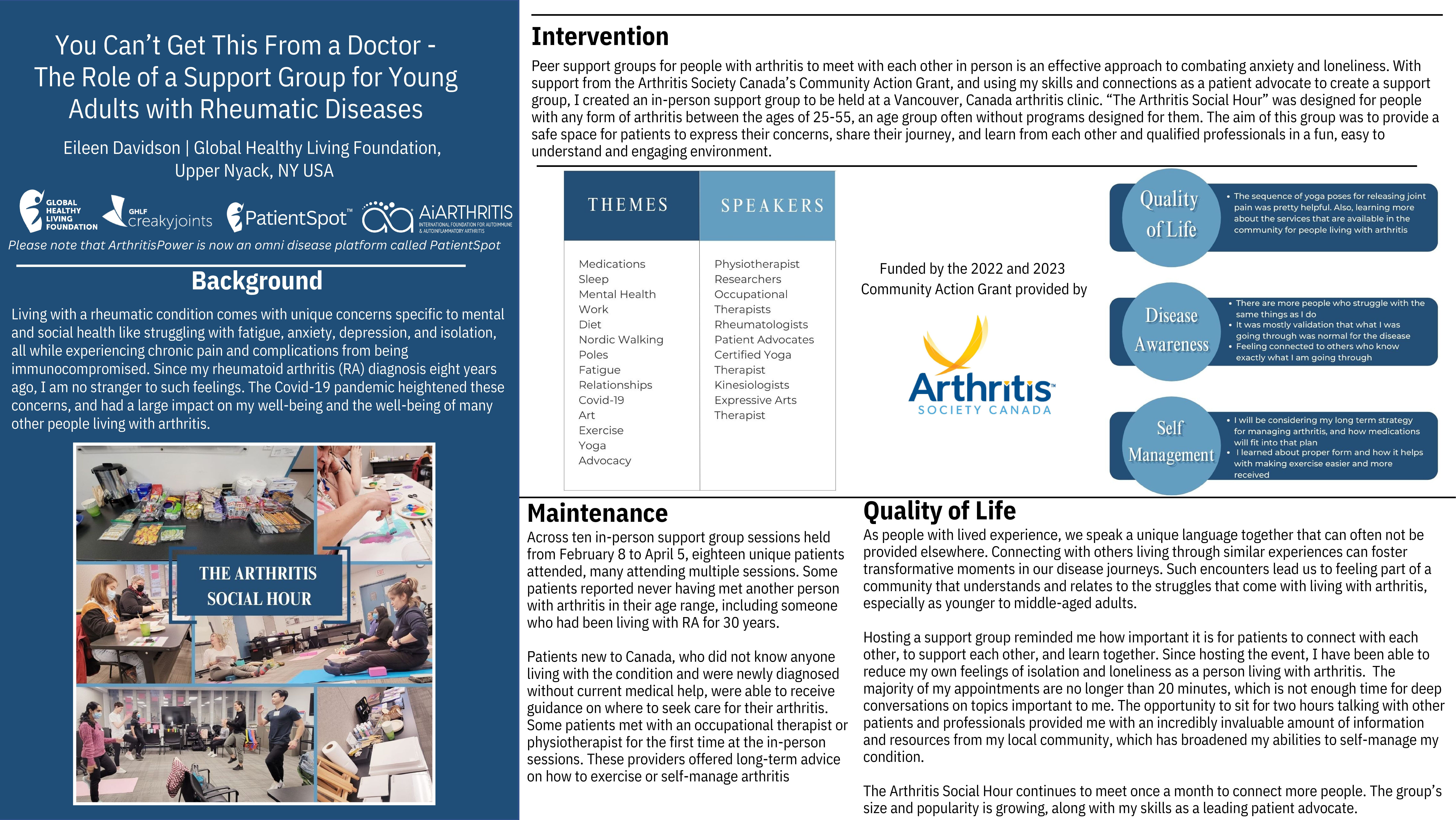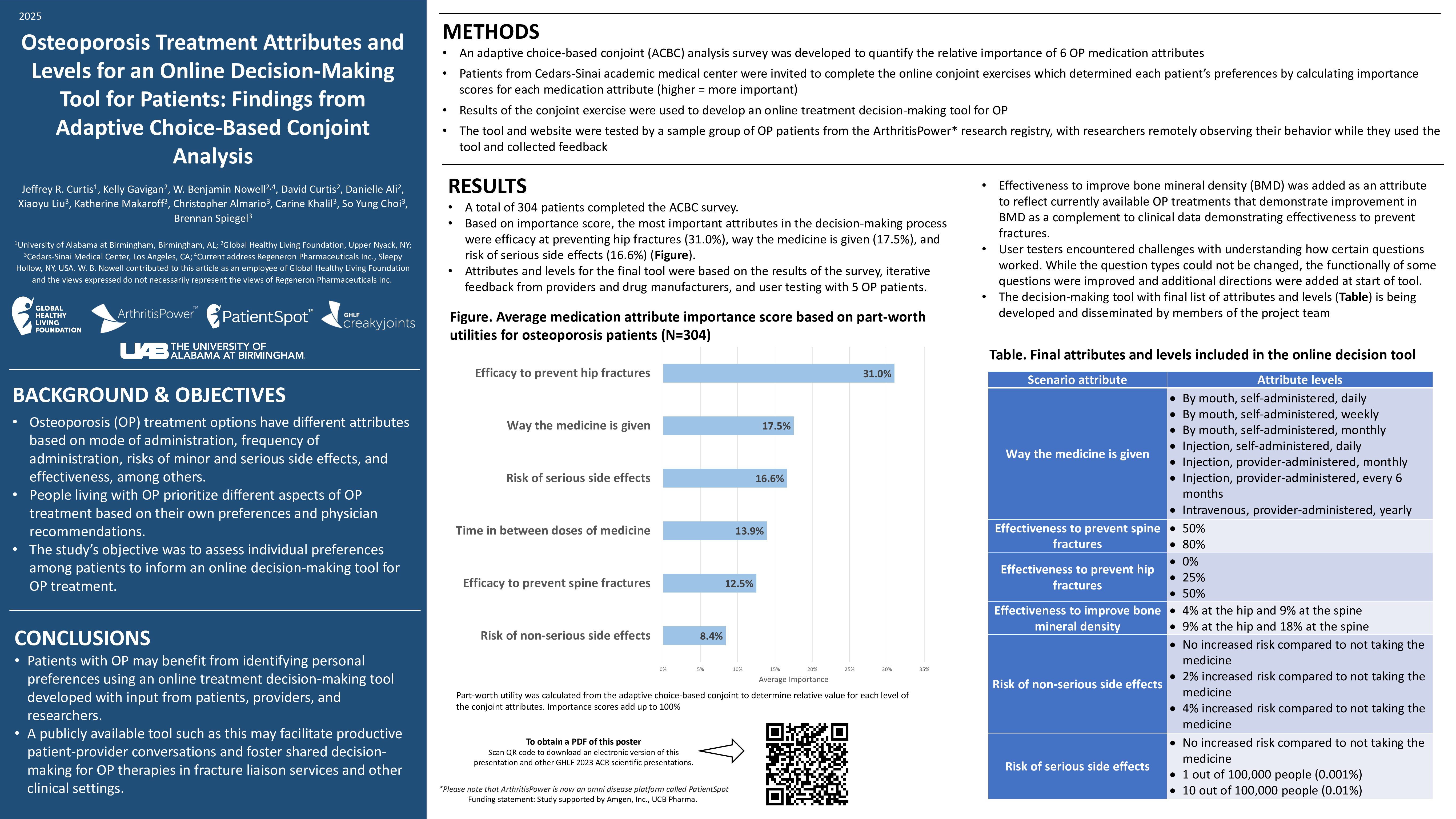This story was told to CreakyJoints by Kevin Thomas, a 53-year-old Detroit native who lives in Dallas-Fort Worth, Texas. Kevin most recently worked as Head of Retail and Visitor Services at Briscoe Western Art Museum in San Antonio before stepping away to focus on his mental and physical health. Kevin lives with ankylosing spondylitis.
Here is Kevin’s story, and how he’s raising awareness about the physical and mental effects of ankylosing spondylitis
Although my official diagnosis just came three years ago at age 50, if I look back on my past with a critical eye, I can see that I’ve had symptoms of ankylosing spondylitis for nearly my whole life. But because I was already 6’3” by age 13, I thought the aches and pains I had were just a side effect of getting really tall really quickly. And I was young and invincible. I didn’t pay attention to health stuff.
I spent a lot of my teen years with extreme fatigue. I would always feel embarrassed because I didn’t even party or anything; I would just be laid up in bed. I went to the doctor because I was tired all the time, and they chalked it up to “doing too much.”
I knew it was more than that.
By the time I was in my early 20s, my neck would regularly lock up on me. I would wake up and not be able to move or use it at all. Doctors would prescribe muscle relaxers, the neck pain would pass, and that would be that.
Later, I dealt with what I thought was sciatica. Every time I would fly home to Detroit, within an hour of my arrival, I would be slumped over in pain. It was the worst in the winter. The change of weather and stress of travel, combined with hours crammed into an airplane seat, would lay me out with lower back pain every time I visited.
Finally, in my 40s, my symptoms escalated enough that they were showing up in other parts of my body. Parts of my body that finally clued my doctors in to the issue behind it all.
Undeniable Evidence of a Problem
About four and a half years ago, a couple of years after taking a new job at an art museum in San Antonio, my health challenges became severe. I started having problems with my feet and hips. Walking became difficult. Sometimes I would get to work and security would meet me at the back door of the museum, wheelchair waiting, because they could see me limping toward the door on camera.
Then, oddly, my eye got really sore. It was like I’d been punched, but there were no bruises. Then the pain got sharp. I went to an ophthalmologist, who told me I had uveitis, which is inflammation of the eye. He prescribed drops and eventually my eye adjusted. A month later it was back — but this time, in the other eye.
This set my doctor’s radar off. He said, “uveitis shouldn’t be happening like this. I think something’s going on with your immune system.” He referred me back to my primary care doctor for blood work.
At that appointment, I told the nurse practitioner that my feet were killing me, my eyes were messing up, my back hurt, and I was either shuffle-walking or using a wheelchair to get around. But I was told I was “just getting older.” I explained that my eye doctor had referred me back to their office because he suspected immune problems. And again, I was told I just needed to accept that I was aging. I felt like screaming.
Finally I did scream. I insisted they took my problems seriously and eventually agreed to run bloodwork. A few days later, the nurse practitioner called and apologized for dismissing me. “Your inflammation markers are maxed out,” she said. It was time to see a rheumatologist, immediately.
A Decades-Late Ankylosing Spondylitis Diagnosis
The first thing I told the rheumatologist was that something hurt “really deep in my butt.” She chuckled, but then had me bend over so she could hit a spot to test it. I literally leapt up in pain and she nodded knowingly with an “Mmm-hmm.” We did all the bloodwork, X-rays, and scans, and within a week she called me with the results.
The first thing she said was “I’m sorry to inform you that you have ankylosing spondylitis.”
But before I could really wrap my head around what that even was, she went on. “And Kevin, from the X-rays, I can see it’s severe. You should have been diagnosed 20-plus years ago.”
Note: Ankylosing spondylitis (AS) is a type of inflammatory arthritis that predominantly affects the spine and sacroiliac joints (where the spine connects to the pelvis), causing lower back, hip, and pelvic pain. If left untreated, AS can cause permanent joint damage and disability in some patients. AS can take a big toll on personal relationships and the ability to work.
She started me on Humira (adaliumab), a biologic medication, right away. Biologic medications act on specific parts of the immune system to reduce overactivity and inflammation that is causing pain and other AS symptoms. But I got a urinary tract infection in the first week. So we moved to another biologic, Cosentyx (secukinumab), that works a little differently in the body.
It seemed to have a positive effect, although it took a while to notice. People I connected with in support groups told me to give it time. Eventually the sharp blistering pains I had been dealing with started to fade a bit. It wasn’t like a drug you took and felt a difference immediately. It was more like I knew when it was time to take it, because a couple of days before, I would notice I was in more pain.
But soon I ran into problems with my insurance. My employer switched from a PPO plan to an HMO plan, and they flat out refused to approve my treatment. [Without health insurance, biologics are prohibitively expensive.] I had also lost access to all the doctors I had been seeing because they were out of network. Finding a rheumatologist at the time was a really long process. I could no longer take the treatment I’d been prescribed.
More Symptoms, More Diagnoses
Not long after I had to stop the biologic, I started having really bad migraine with aura, which was a totally new experience for me. I thought I was having a stroke. And I was having hip pain, too. My rheumatologist explained that I had gone for so long without being diagnosed and being on treatment that my joints were permanently damaged. Any cushioning I had was now gone, and bone was rubbing on bone.
But although my hip joints were eroded, she said they were stable, and not in danger of fracturing, though that could change over time. My neck, however, was messed up by osteoarthritis, which she said was probably where my migraine was coming from.
I was struggling physically and mentally. I decided to resign from my job. The pandemic was in full swing. I had taken on guardianship of my 15-year-old nephew, and between that and my diagnosis, I had never taken a break. It was time. So I cashed out a portion of my 401K and went to Mexico.
Or at least, I tried to go to Mexico. At the airport, I started feeling terrible. I was hot, then cold, and I had this horrible sense of doom. I walked to the ticket counter and was in the process of asking if they had a nurse when suddenly I hit the floor. Paramedics came out of nowhere. They ripped off my clothes and put electrodes on my legs and chest and all that, trying to see if I was having a heart attack. They got me to an ambulance where they told me I had had a major panic attack.
I never made it to Mexico. Over the next two months, I dealt with dizziness and unstable blood pressure until finally an ear nose and throat specialist solved part of the puzzle. He said, “I hate to tell you, but you’re about to add a couple more things to your list.” He diagnosed me with Meniere’s disease, which is a middle ear disorder that runs in my family, and autoimmune inner ear disease, with the possibility of vestibular migraine as well.
Writing a New Script
I’ve since come to the Dallas-Fort Worth area where I’ve been living with my brother for the last couple of months. My nephew is currently a high school senior, and enrolled in a special basketball program in Phoenix, Arizona.
My health has been up and down. I am still not under treatment for AS. Currently, when the flares are hard, I take Tylenol Arthritis 650mg, and I’m beginning to take tumeric supplements to help with inflammation, as discussed with previous rheumatologist.
As part of one of my regular doctor’s visits this year, they had me talk to a counselor who helped me turn my attention to my mental state. I talked about everything that had happened with my health and life, and she gently asked, “you do know that’s a lot, right?”
She said she thought I was dealing with depression, in part because I was still continuing to live like I didn’t have a chronic illness.
That’s when I realized I’d been in denial. It was a wake-up call for me. I started accepting that the person I was before my chronic illnesses no longer exists. I’m a whole new being. My joints, my day-to-day life, it’s all changed. But my life isn’t over. It’s changed. That’s all that’s happened. It’s not a terminal thing. It’s just a new way of being in the world.
I started putting out TikTok videos and posts about what I was going through. They’re for anyone, but especially Black men. In all the different social media groups I’m a part of, I seldom see men who look like me. We don’t talk about our health, especially our mental health.
I’m blessed to have a support network in my own family. When I came to my brother’s house and told them I’d been diagnosed with anxiety, they were open to the conversation. I was able to talk to them. And, in fact, through that conversation I discovered there were others close to them dealing with clinical depression. It is moments of vulnerability like this that lead to connection and support for all of us.
My Advice for Others Living with AS
Live your best life *now*
There is an adjustment period after a diagnosis where you have to push through the denial and accept your life as it is. Not who you wish you were, or the you of the past, but the you of right now: someone with chronic illness who is learning a new way to be in the world.
Learn to adapt
Use tools that can help you get the most out of daily life. I use a cane to help me get around on different terrains because of my balance and joint issues. I wear sunglasses outside because the light hurts my eyes. (Uveitis causes sensitivity to light.) Find ways to adjust so you can go about your daily activities.
Protect your emotional bandwidth
Some people just aren’t going to get it. I’ve had friends say, “You keep talking about this illness. You need to stop.” And I put up with that for a while, until I realized I didn’t have to. You don’t have to spend your time and energy with people who use up the energy you need for your own wellness.
Be a More Proactive Patient with ArthritisPower
ArthritisPower is a patient-led, patient-centered research registry for joint, bone, and inflammatory skin conditions. You can participate in voluntary research studies about your health conditions and use the app to track your symptoms, disease activity, and medications — and share with your doctor. Learn more and sign up here.
If you’re interested in being a patient advocate with ArthritisPower and helping our efforts to engage more diverse patient groups in research, check out our Patient Engagement Advisor Program.

